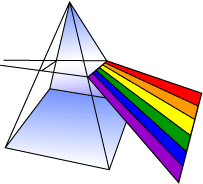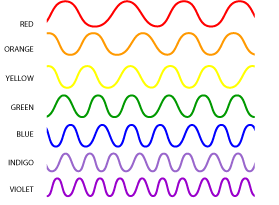 |
 |
 |
 |
 |
||
| Science of Light -> Visible Light |
|
Visible light waves are the only electromagnetic waves we can see. These light waves range between 400 nanometers and 700 nanometers and comprise the portion of the electromagnetic spectrum in between the ultraviolet and infrared light wave range. We see these waves as the colors of the rainbow. Each color has a different wavelength. Red has the longest wavelength and violet has the shortest. When all the waves are seen together, they make white light. The visible light from space can be detected by ground-based observatories during clear sky evenings. Advances in techniques have eliminated much of the blurring effects of the atmosphere, resulting in higher-resolution images. Although visible light does make it through our atmosphere, it is also very valuable to send optical telescopes and cameras into space. In the darkness of space we can get a much clearer view of the cosmos. We can also learn much more about objects in our solar system by viewing them up close using space probes. Visible light observations have given us the most detailed views of our solar system, and have brought us fantastic images of nebulae and galaxies. When white light shines through a prism, the white light is broken apart into the colors of the visible light spectrum. Water vapor in the atmosphere can also break apart wavelengths creating a rainbow. Each color in a rainbow corresponds to a different wavelength of electromagnetic radiation.
How do we "see" using Visible Light? Cones in our eyes are receivers for these tiny visible light waves. The Sun is a natural source for visible light waves and our eyes see the reflection of this sunlight off the objects around us. The color of an object that we see is the color of light reflected. All other colors are absorbed. Light bulbs are another source of visible light waves. |
|

